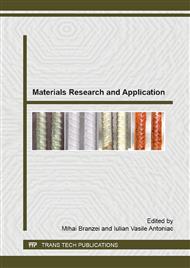p.112
p.121
p.129
p.135
p.143
p.149
p.155
p.160
p.166
Microstructural Design of an AlMgSi Alloy via ECAP Processing: An Advanced SPD Manufacturing Technique for NC/UFG Materials
Abstract:
Severe plastic deformation (SPD) has received enormous interest over the last two decades as a method capable of producing fully dense and bulk ultra-fine grained (UFG) and nanocrystalline (NC) materials. Significant grain refinement obtained by SPD leads to improvement of mechanical, microstructural and physical properties. Compared to classical deformation processes, the big advantage of SPD manufacturing techniques, represented in particular by equal channel angular pressing (ECAP) is the lack of shape-change deformation and the consequent possibility to impart extremely large strain. In ECAP processing, the workpiece is pressed through a die in which two channels of equal cross-section intersect at an angle of ϕ and an additional angle of ψ define the arc of curvature at the outer point of intersection of the two channels. As a result of pressing, the sample theoretically deforms by simple shear and retains the same cross-sectional area to allow repeated pressings for several cycles. A commercial AlMgSi alloy was investigated in our study. The specimens were processed at room temperature for multiple passes, using three different ECAP dies. All samples (ECAP processed and as-received) were subjected to metallographic analysis and mechanical testing. Several correlations between the main processing parameters and the resulting microstructural aspect and mechanical features for the processed material were established. It was shown that severe plastic deformation by means of ECAP processing can be used in aluminum alloys microstructural design as an advanced tool for grain refinement in order to attain the desired microstructure and mechanical properties.
Info:
Periodical:
Pages:
143-148
Citation:
Online since:
July 2015
Authors:
Price:
Сopyright:
© 2015 Trans Tech Publications Ltd. All Rights Reserved
Share:
Citation:


